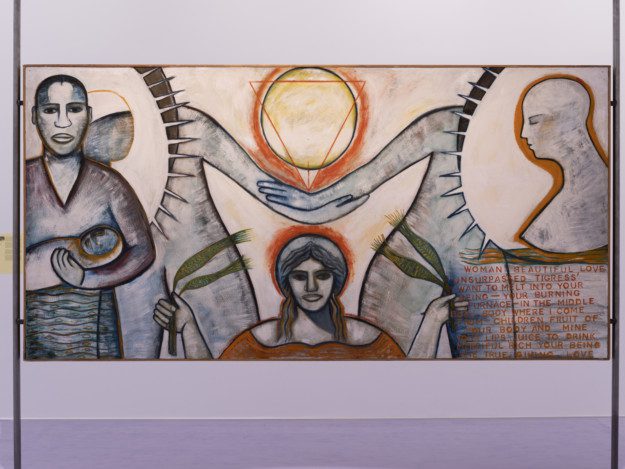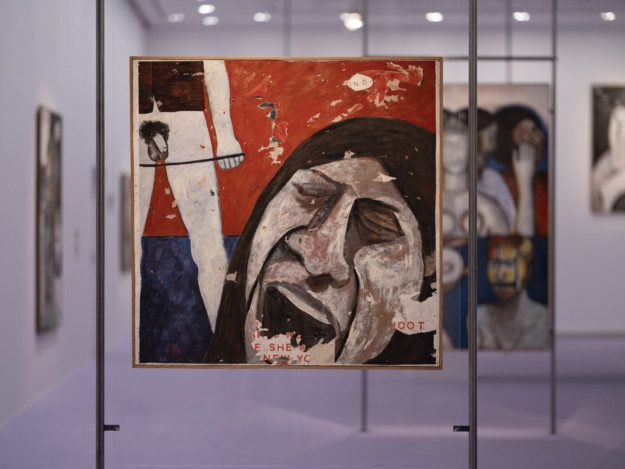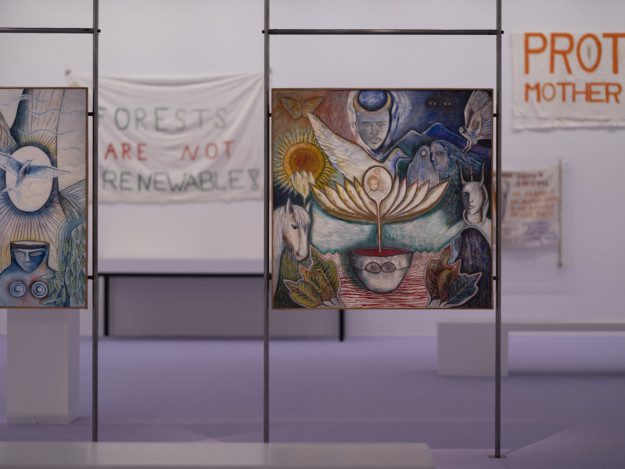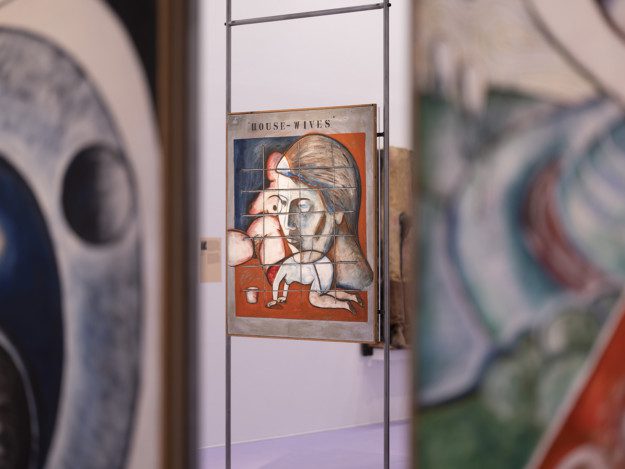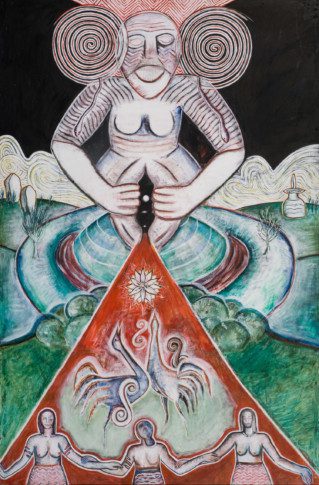
Monica Sjöö, The Goddess at Avebury and Silbury, 1978 Museum Anna Nordlander © The Estate of Monica Sjöö. Photo: Albin Dahlström/Moderna Museet
Monica Sjöö
The great cosmic mother
13.5 2023 – 15.10 2023
Stockholm
Audio guide
Listen to the audio guide for “Monica Sjöö: The Great Cosmic Mother”.
Hear about Monica Sjöö’s life and discover works such as “God Giving Birth” and “The Goddess at Avebury and Silbury”.
Fridays for Future
Fridays For Future is a youth-led global climate justice movement. In connection with “Monica Sjöö: The Great Cosmic Mother”, Fridays For Future Stockholm has organized open sessions in Moderna Museet’s workshop to create banners, together with visitors, to use in the movement’s climate strikes.
Several of the banners were displayed on the wall outside the exhibition, along with banners used by Fridays For Future since the first global strikes “School strike for the climate” and “People Not Profit” − iconic banners that helped create the international youth climate movement.

Monica Sjöö was controversial throughout her life. In raw and bold imagery, she was an early advocate of women’s right to sexual empowerment and free abortion. She became politically aware in her youth, through demonstrations against the Vietnam war, the anarchist movement and the independent art scene in Stockholm. These experiences laid the foundation for Sjöö’s vivid existence as an artist and activist in the UK, where she spent most of her life, and where she became a key figure in the British women’s liberation movement.
“The Great Cosmic Mother” is the first retrospective museum exhibition of Monica Sjöö’s oeuvre. Featuring some fifty works from Sjöö’s entire practice, it spans from monumental paintings, over political posters and banners, to drawings and material from the artist’s large archives.
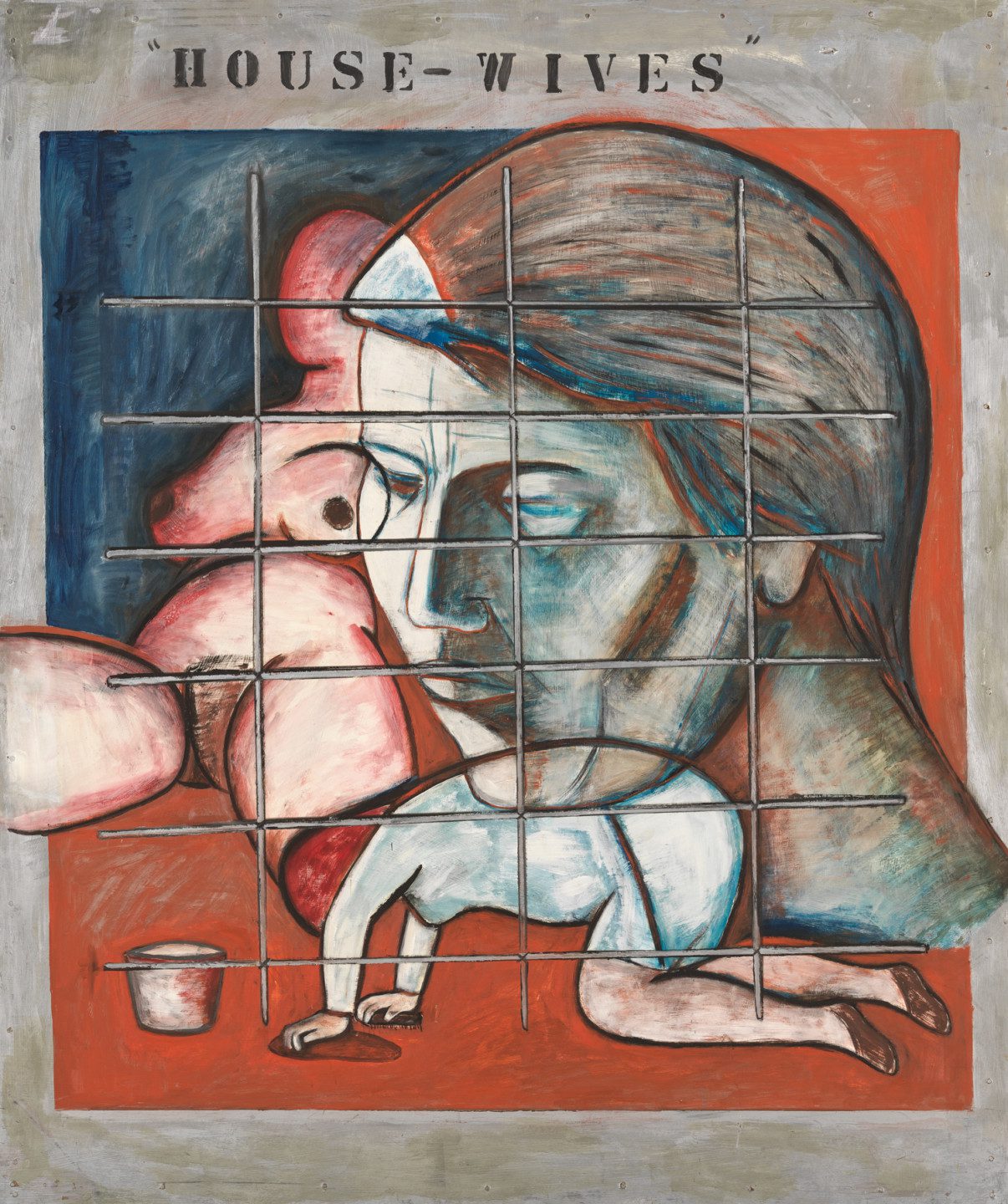
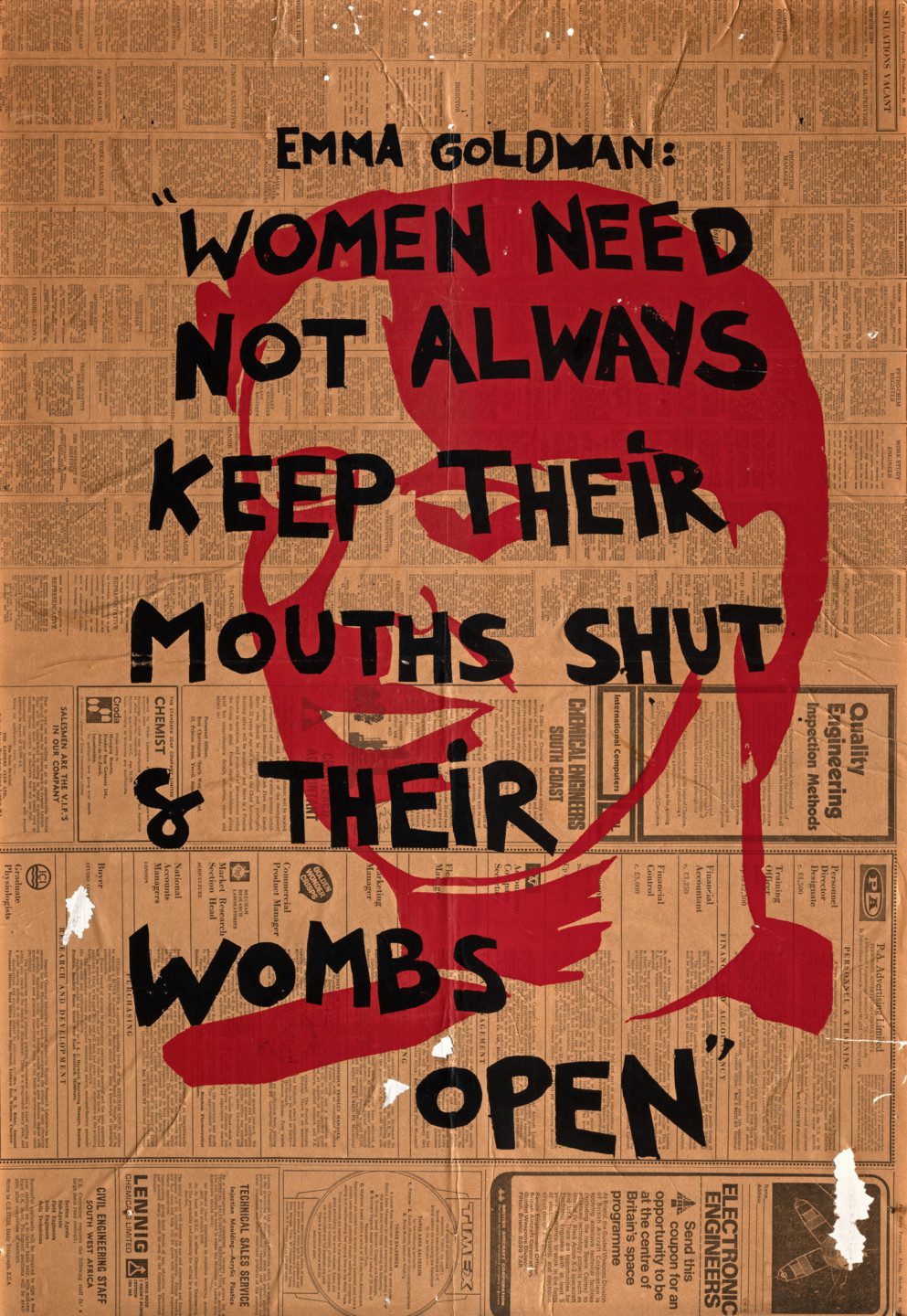
From Härnösand to Bristol
Monica Sjöö was born in Härnösand in 1938 but spent most of her adult life in Bristol. In the 1960s, she met the artist Siri Derkert (1888–1973), who had a formative influence on her. Derkert’s involvement in the women’s movement and her work with early environmental activists such as Elin Wägner and Rachel Carson, strengthened Sjöö in her convictions and led her to eco-feminism.
In the UK, Monica Sjöö became an active spokesperson for women’s issues and organised several political campaigns and action groups. Her manifesto “Towards a Revolutionary Feminist Art” (1971) and collectively-organised exhibitions of women artists laid the foundations for the British feminist art movement and contributed to the development of the international women’s movement at the time.
God Giving Birth – a feminist icon
Today a feminist icon, Monica Sjöö’s painting “God Giving Birth” (1968) was considered both blasphemous and obscene at the time, and was constantly being removed from the exhibitions where it was shown. The 1970s may be perceived as the decade of women’s liberation, but this painting almost got Sjöö prosecuted when it was exhibited in the UK in 1973.
Censorship merely strengthened Sjöö in her resolve to portray women’s experiences in her art. Rejecting abstract art as a Western male privilege, she asked herself:
“How does one communicate women’s strength, struggle, rising up from oppression, blood, childbirth, sexuality – in stripes and triangles?”

Audio guide Monica Sjöö
Listen to the audio guide for “Monica Sjöö: The Great Cosmic Mother”. …
Audio guide Monica Sjöö
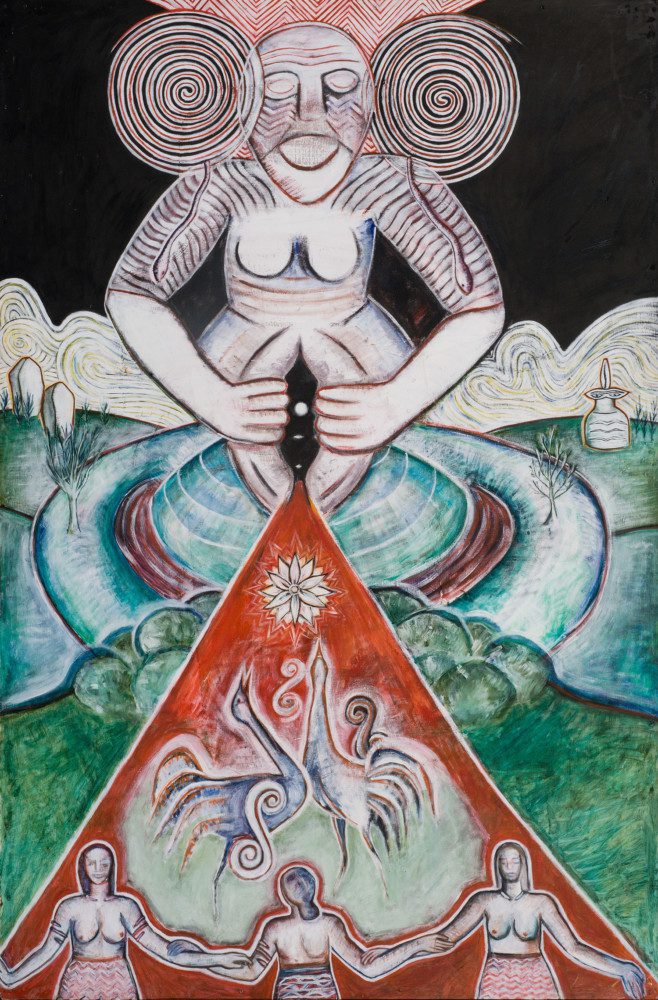
Biography Monica Sjöö
Monica Sjöö is born on 31 December 1938 in Härnösand, the daughter of Gustav Sjöö and Harriet Rosander, both professional artists. Her parents …
Biography Monica Sjöö
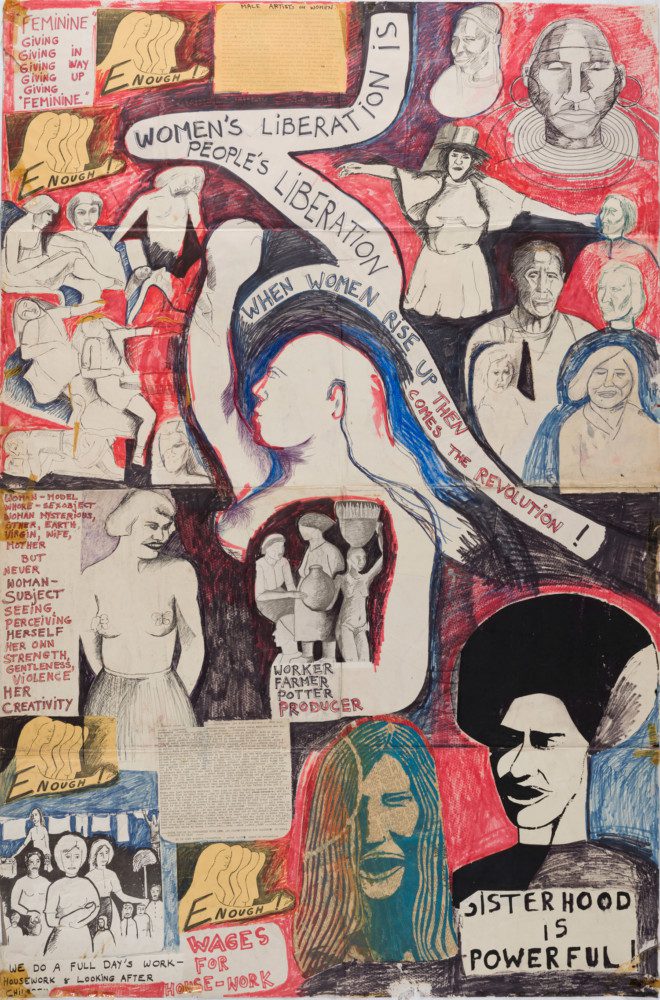
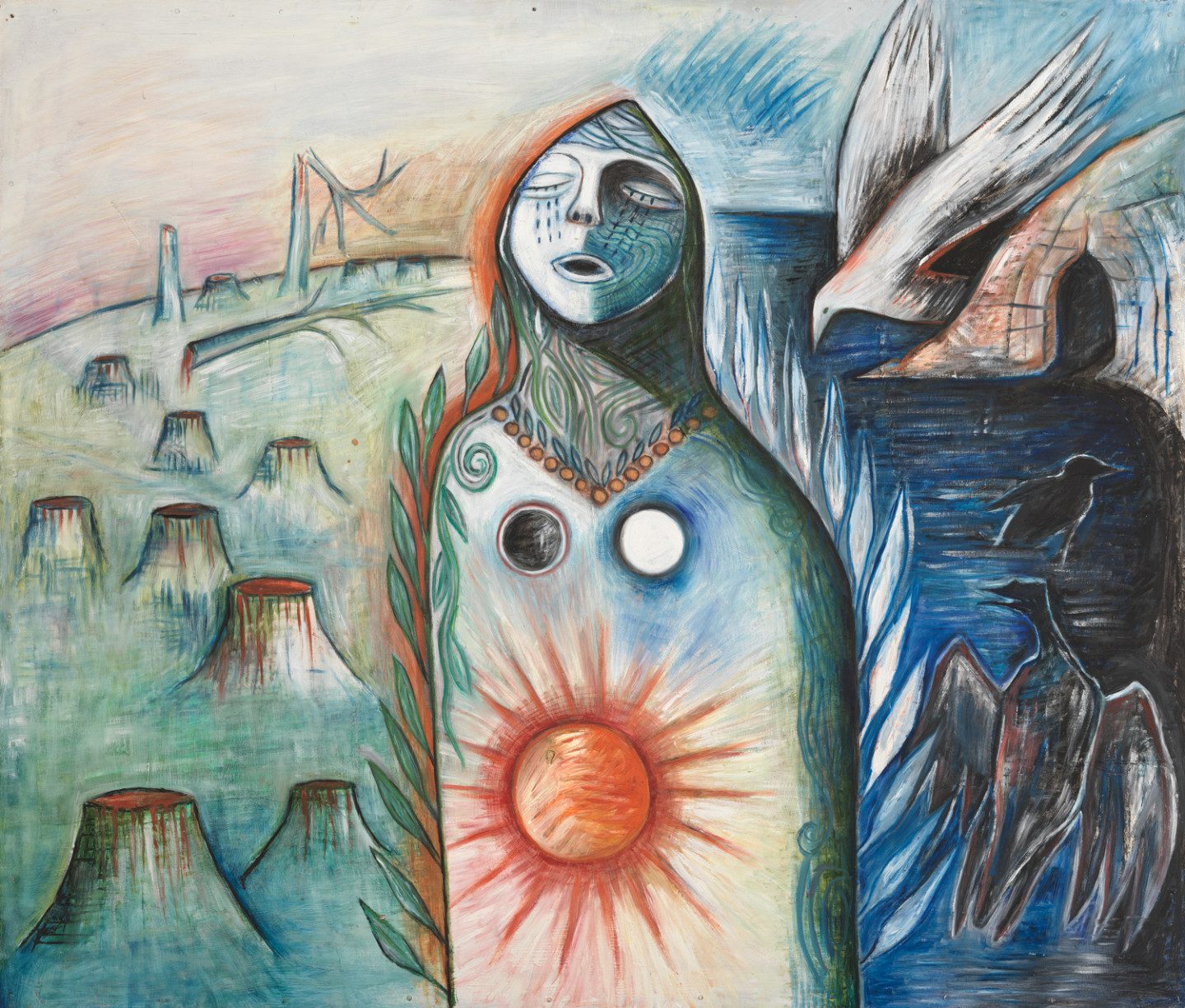
Spirituality and political change
Monica Sjöö linked many of her ideas to The Great Mother, a figure that is found in many cultures throughout history. For Sjöö, the essence of The Great Mother was present in all phases of life, as an experience that imbues both nature and being.
She saw the oppression inflicted on women and minorities, and the exploitation of green areas and the ravaging of nature, as violence against The Great Mother. In this way, her commitment to the women’s movement and environmentalism and her spiritual convictions were related.
“I have not been trying to understand and communicate (through painting and writing) the ancient religion of the Mother as some form of escape from having to face up to the very real and acute economic and sexual oppression of us women in present capitalist societies”, she writes in the article “The Witches are Returning” in Peace News, 19 November 1976:
On the contrary, the knowledge of the existence in the ancient past of cultures shaped around and by creative women who were mothers as well as producers – seers, shamans and communicators with the living spirit and energies of the cosmos and Earth – gave me strength and hope to struggle during many years before the rebirth of the Women’s movement.
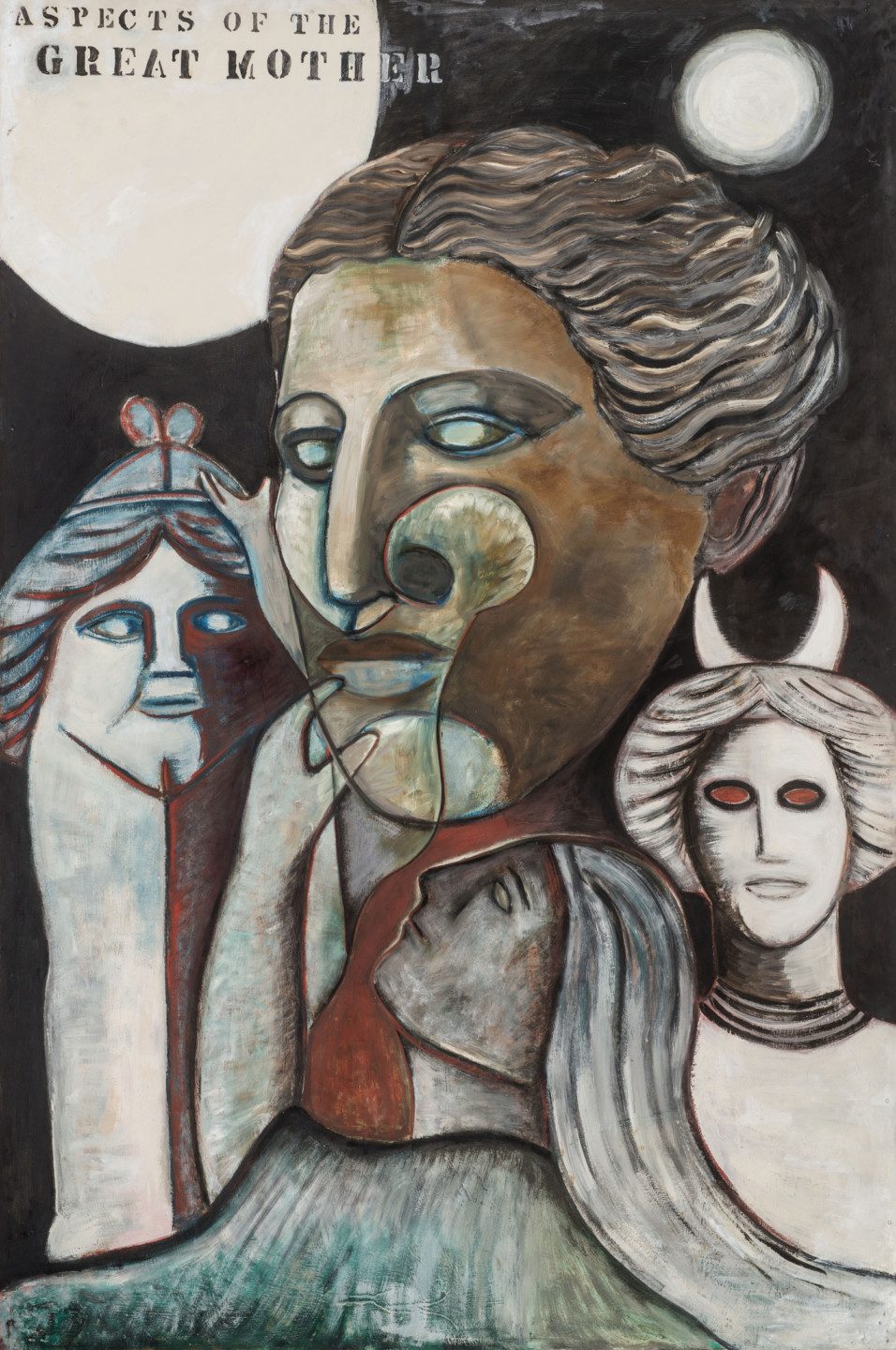

Outlining an alternative future
Monica Sjöö’s profound commitment to the peace movement was fuelled by the military escalation in the 1980s. She organised several political campaigns, and participated with women’s groups such as “Women for Life on Earth” in peace marches and anti-nuclear weapons camps at RAF Brawdy and Greenham Common. Women chained themselves to military facilities to protest against what they perceived as an overhanging threat to all life on earth and to promote disarmament.
The women’s community around the Greenham Common Women’s Peace Camp combined anarchism, eco-feminism, environmental activism and spirituality in dedicated protests, dance and singing.
Sjöö’s lifelong research into ancient matriarchal cultures influenced her philosophy and artistic practice. She used her knowledge to outline an alternative possible future, where spirituality and political change were united. Sjöö looked back in history to find voices and contexts that could resound mightily in the contemporary world and pave the way for a total revolution.

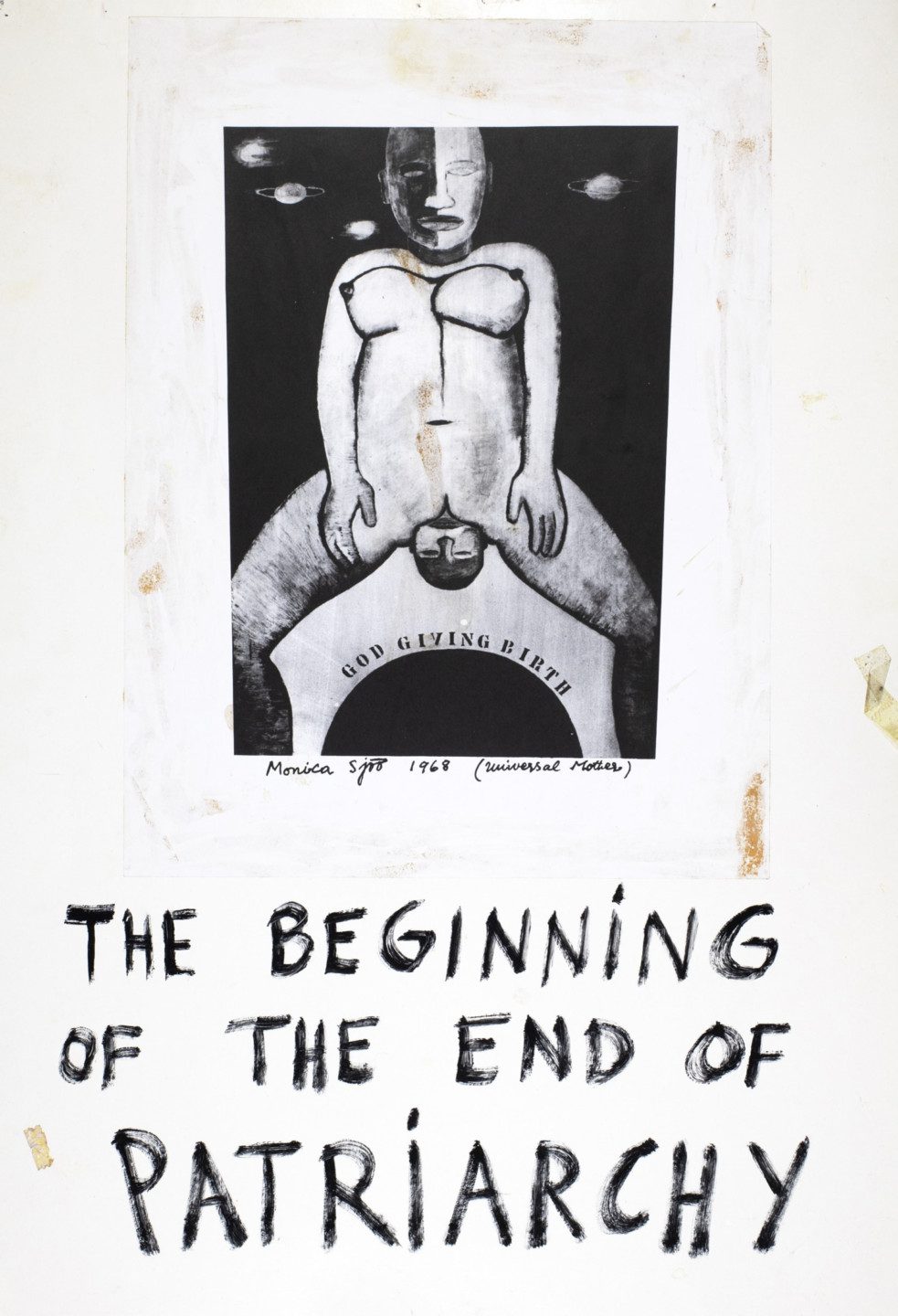
“Monica Sjöö – The Great Cosmic Mother” is produced in collaboration with Modern Art Oxford, where it will be shown 18 November 2023–25 February 2024. In the spring of 2024, the exhibition will travel to Moderna Museet Malmö.
Curators: Jo Widoff, Moderna Museet, and Amy Budd, Modern Art Oxford.
With support from: The Firestorm Foundation

